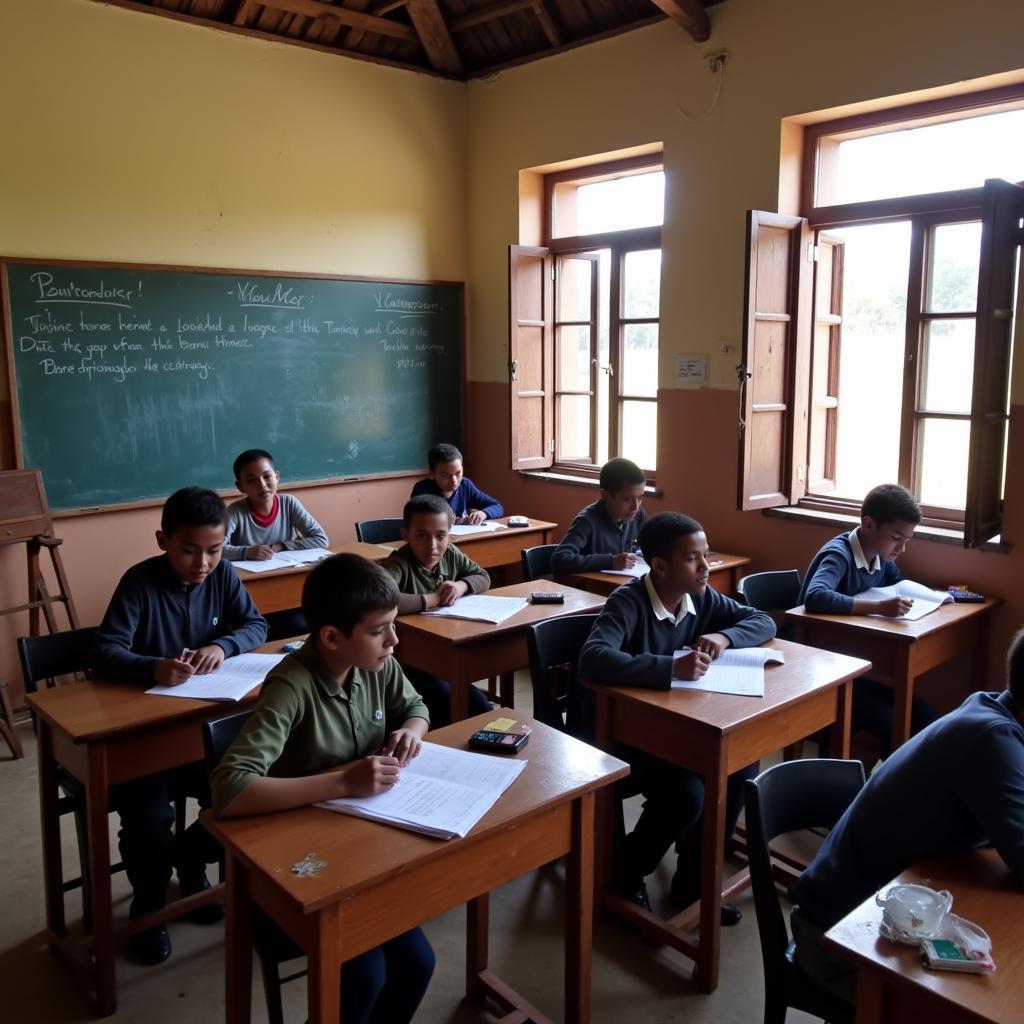Rural education has been a recurring theme in IELTS Writing Task 2, appearing roughly every 4-6 months in recent years. Based on analysis of past exams and Educational inequalities and access, this topic remains highly relevant, especially given global concerns about educational disparities between urban and rural areas.

Let’s examine a recent IELTS Task 2 question that exemplifies this theme:
In many countries, children in rural areas have limited access to quality education compared to those in urban areas. What are the causes of this problem and what measures can governments take to address it?
Analysis of the Question
This question requires:
- Discussing causes of educational inequality between rural and urban areas
- Proposing government solutions
- Using a cause-solution essay structure
- Supporting arguments with relevant examples
Sample Essays
Band 8 Essay (290 words)
The disparity in educational quality between rural and urban regions remains a pressing concern in numerous developing nations. This essay will analyze the root causes of this issue and suggest viable government interventions.
The primary causes of this educational inequality are multifaceted. Firstly, rural areas often suffer from inadequate infrastructure and resources. Many village schools lack basic facilities such as properly equipped classrooms, libraries, and importance of internet access in rural areas. Secondly, qualified teachers are reluctant to work in remote locations due to lower salaries and limited career development opportunities. Additionally, rural communities frequently face economic hardships, compelling children to assist in agricultural work rather than attend school.
To address these challenges, governments can implement several effective measures. The most crucial step is increasing financial investment in rural education infrastructure, including constructing modern school buildings and providing essential learning materials. Furthermore, authorities should introduce incentive packages to attract and retain talented educators in rural areas, such as higher salaries, housing allowances, and professional development opportunities. Similar to how e-learning is transforming adult education, governments can also leverage technology by implementing distance learning programs and digital resources to supplement traditional teaching methods.
In conclusion, while the rural-urban education gap stems from complex factors, targeted government interventions can significantly improve the situation. The success of these measures will ultimately depend on sustained commitment and effective implementation.
Band 6.5 Essay (270 words)
Nowadays, there is a big difference between education in cities and villages. I will discuss why this happens and what governments can do about it.
There are several reasons for this problem. First, rural schools don’t have good buildings and teaching materials. Many schools in villages are old and don’t have enough books or computers. Second, good teachers don’t want to go to rural areas because they get less money and life is harder there. Also, some poor families in villages need their children to help with farming instead of going to school.
The government can do many things to solve these problems. They should give more money to rural schools to fix buildings and buy new equipment. As highlighted in the benefits and drawbacks of remote learning, they can also use online classes to help students learn more. Another important thing is to give teachers better pay and benefits when they work in villages. This will make more teachers want to work there. The government should also help poor families so their children can focus on studying instead of working.
To conclude, rural education has many problems, but governments can help by spending more money and making better policies.
Score Analysis
Band 8 Essay:
- Sophisticated vocabulary and complex structures
- Clear organization with coherent paragraphs
- Relevant examples and detailed explanations
- Natural transition between ideas
Band 6.5 Essay:
- Basic vocabulary with some repetition
- Simple but clear structure
- Limited range of expressions
- Some development of ideas but less sophisticated
Key Vocabulary
- disparity (n) /dɪˈspærəti/ – significant difference
- multifaceted (adj) /ˌmʌltɪˈfæsɪtɪd/ – having many aspects
- infrastructure (n) /ˈɪnfrəstrʌktʃər/ – basic physical systems
- incentive (n) /ɪnˈsentɪv/ – motivation or reward
- intervention (n) /ˌɪntərˈvenʃən/ – action taken to improve something
For practice, try writing your own essay on this topic and share it in the comments. You might also consider similar topics like rural healthcare access or technological disparities between urban and rural areas.